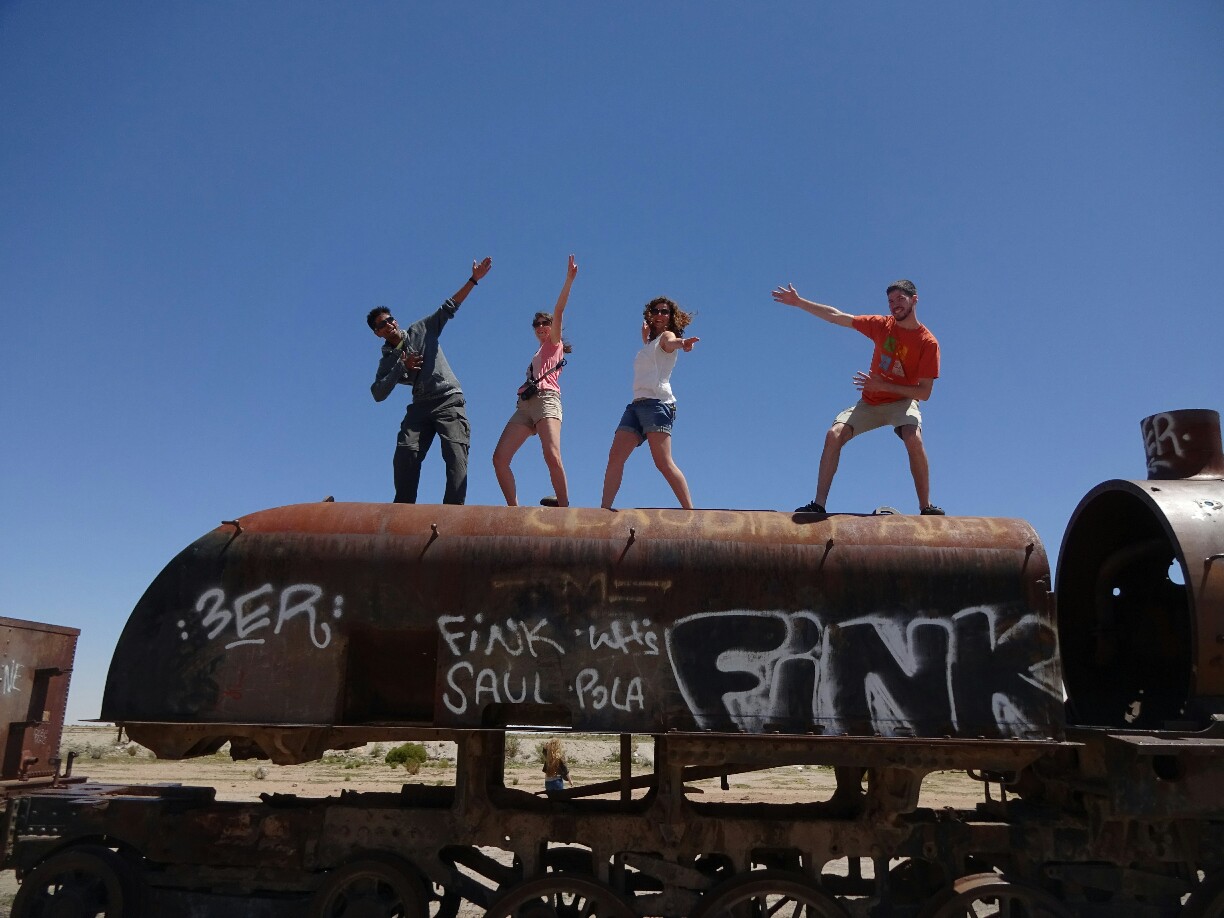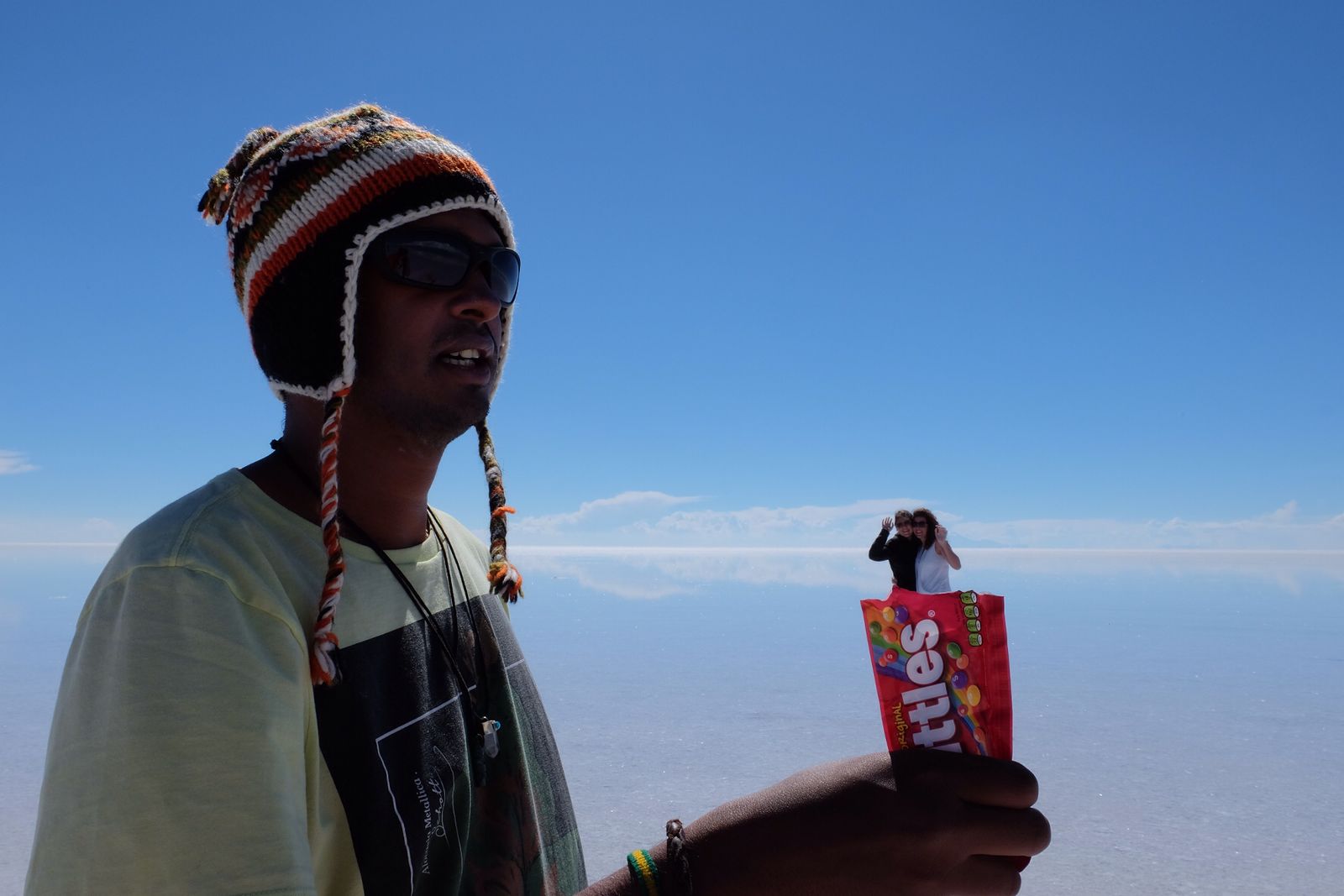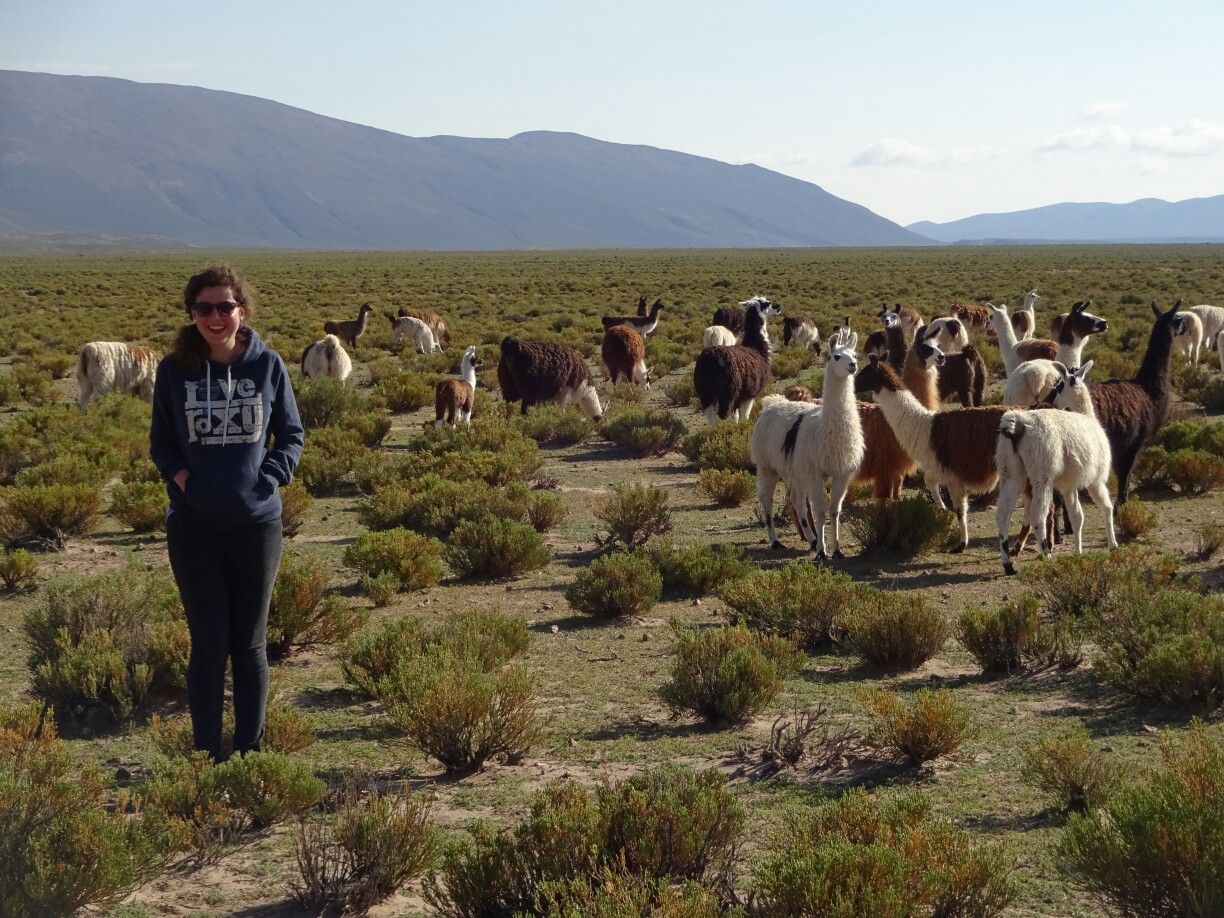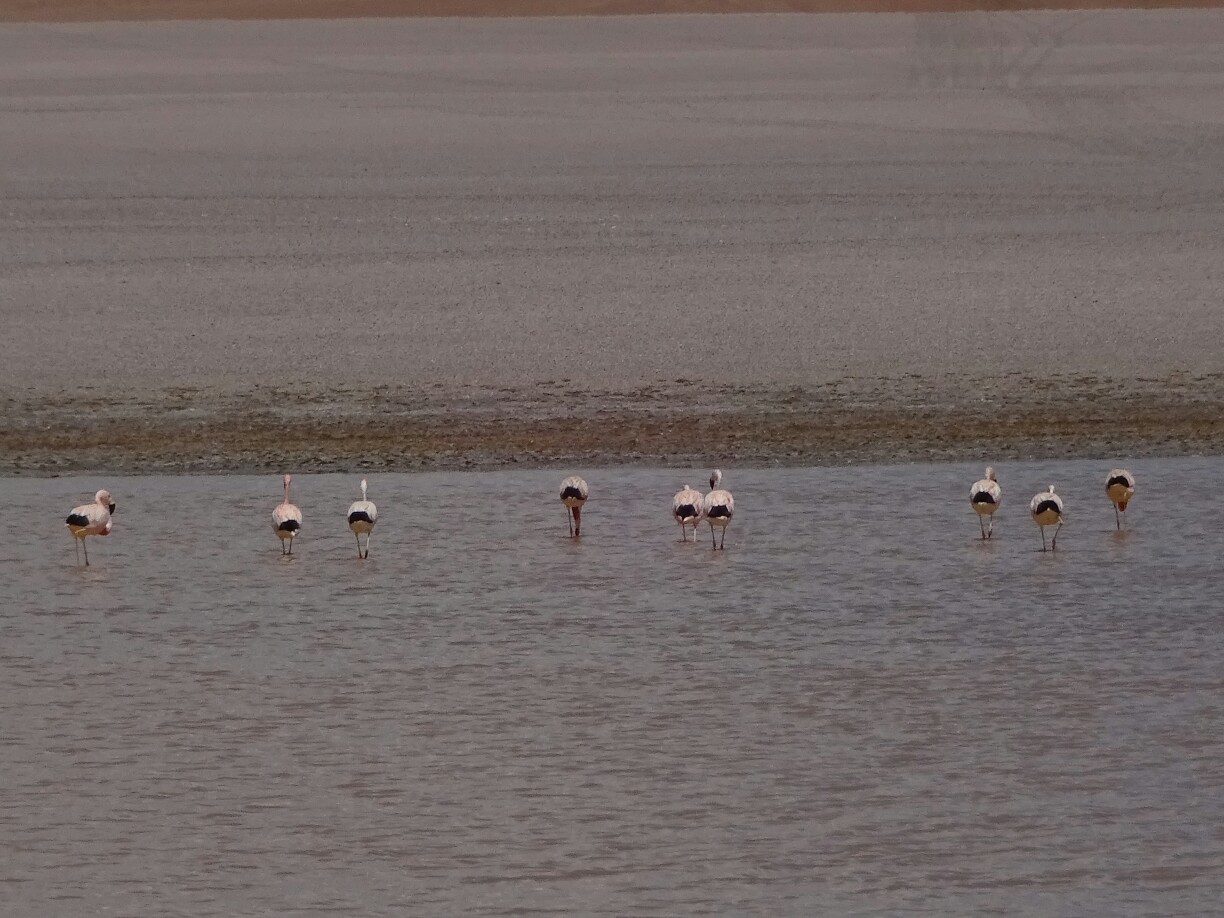Since we entered Bolivia it had felt like the days were getting better and better, with one highlight chasing the next, most of them leaving an unexpected impression of people, landscapes or local customs. With Uyuni we were headed for one of my “must-see” attractions on this trip: The “Salar de Uyuni”. But very little did I know about this salt flat, other than it can be visited on a three day tour, with one stop in the middle of the desert for some cool pictures with a dazzling perspective.

But the first stop on the tour was the train cemetery outside the town of Uyuni. Here, Markus, our guide for the tour, told us about the sulphur mining that used to be the main business for the train companies. After the Pacific war and the discovery of artificially produced sulphur the trains became obsolete and were disposed here. Like everyone else, we found ourselves an unoccupied locomotive for some nice pictures.


From there we continued in the other direction. Santiago, our driver, took David and Lina from New Zealand, Nik, who had joined us after staying a bit longer in Peru, and Dani, Krissi and me to a little village outside the salt flats. Here we learned about the salt mining and the purification of the salt and had lunch in a house built from large salt blocks, where the layers of deposition were clearly visible.

With more than enough food in our stomachs we entered the “Salar de Uyuni”, the largest salt flat in the world at about the same size as the Libanon. Again, it used to be connected to the Pacific Ocean until the continental uplift isolated the body of water and it eventually evaporated, leaving behind all the salt. Nowadays, in the dry season it’s a bright white desert covered in salt, while during rainy season it gets flooded, producing a giant mirror.


As we were in between the seasons, we got a little bit of both, but we could only imagine how it looks completely inundated or completely dry. We still got a lot of nice pictures. Some of our group were perfectly prepared with all sorts of little items for hilarious pictures. The perspective is everything, as the surrounding landscape is identical for miles and miles, playing tricks on the eye of the observer.


Because of the salty water, the cars can’t go very fast, as the more sensitive parts of the engine would come into contact with the water, damaging them through corrosion. Therefore, we had to get back out of the salt flats and drive all around to a little accommodation, where we spent the night. Early the next morning we hit the road again and find some llamas along the way. We tried our best not to scare them, but getting a proper “llama-selfie” was still nearly impossible unless you waited for them to take a pee.


Further down the road we stopped at a small canyon in search for puma and an ancient plant that is related to corals, but has adopted to a life without water. It only grows about 1mm per year and has various healing powers known to locals. Needless to say that we did find the plant, but not the puma, who was probably watching us. Therefore, we returned to the car and continued our way across the “Altiplano”, the high plains of Bolivia, with a base elevation of more than 4000m and higher.


As the day continued, the landscape around us became even more breathtaking than the salt flats had been the day before. Every time we thought it couldn’t get any better, nature proved us wrong. The sight of the vast desert with the snow-capped volcanos emerging from the plains was truly amazing. And the desert around us was changing as well – from sandy to rocky or from beige to light red. Everything was possible.


As the day progressed we encountered more and more lagoons. They had different sizes and colors, depending on the presence of certain minerals in their vicinity. When the air was calm and quiet they were like giant mirrors, perfectly reflecting the surrounding mountains. Dozens and sometimes even hundreds of flamingos call these lakes their home and can be watched how they search the water for food.


Probably the most impressive lagoon is the “Laguna Colorada” with its distinctive red and white coloring, which is complemented by an intense green of plants in the lake. It’s also home to several different species of flamingo and is under special protection as part of the Eduardo Avaroa Andean Fauna National Reserve. It was definitely a worthy finale of our time in Bolivia.

But it was not the only finale of that day, as I had been troubled with diarrhea for the past two days. Maybe the altitude was also playing a role, as we were reaching 5000m, but by the late afternoon I was feeling really bad and didn’t care much for our last stop at the geysers. Once we reached our accommodation, I dropped everything and just went to bed, unfortunately missing out on some wonderful hot springs under a perfectly clear and starry night sky.


After taking two penicillin and sleeping for twelve hours, I felt much better. That way we could continue to “Dali’s desert”, where the landscape resembles the surrealistic paintings of Salvador Dali. From there it wasn’t far to the “Laguna Verde”, not green at that time due to the lack of wind, where we had to say goodbye to David, Lina and Nik, who would go back to Uyuni, while Dani, Krissi and I continued across the border and into Chile (once again).


